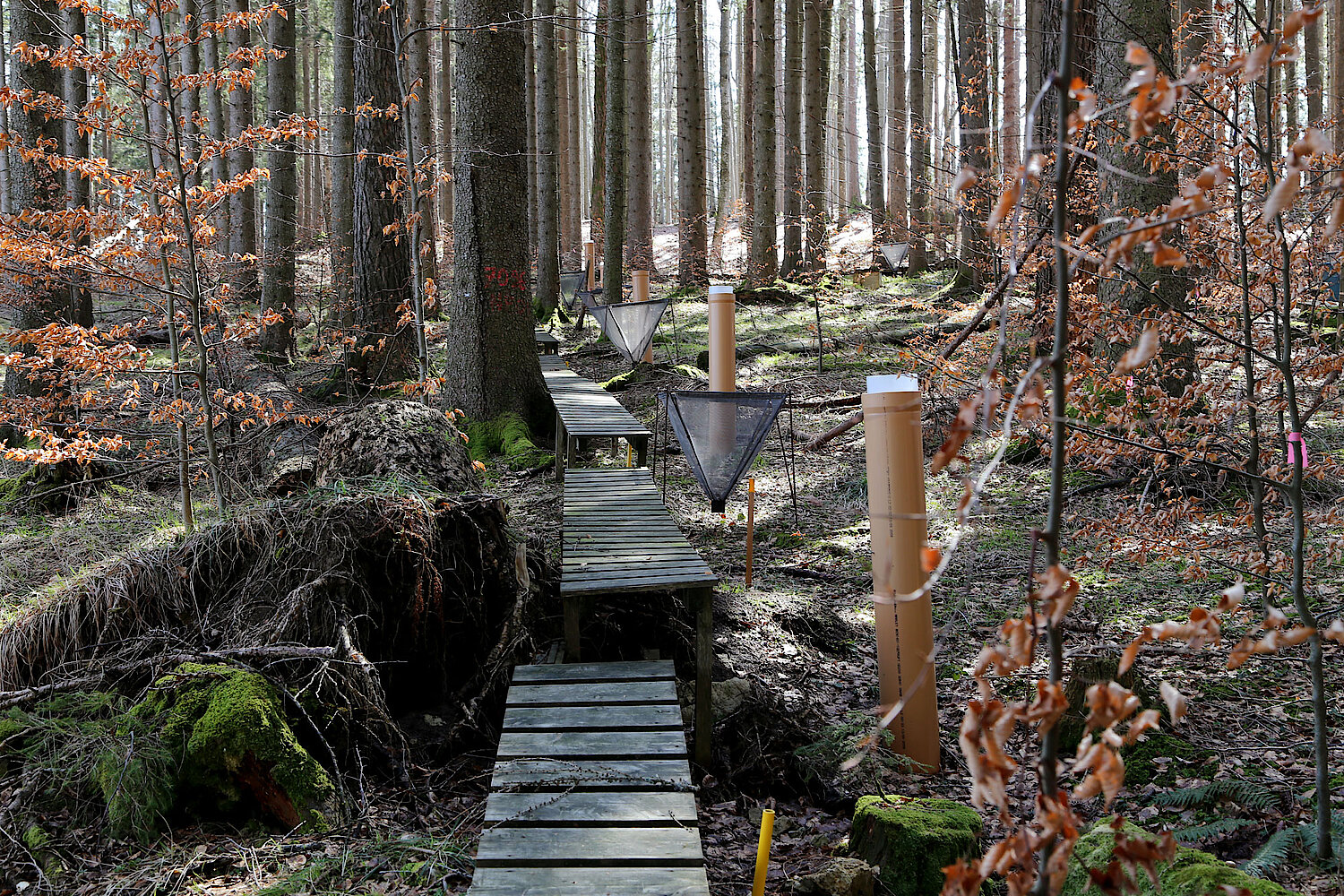30 years of environmental monitoring at Zöbelboden
12,000 samples, 650 measuring devices, 250,000 chemical analyses – just three figures from three decades of ecosystem research at Zöbelboden in the Kalkalpen National Park. Far away from motorways and other sources of pollution, the successes of air pollution control, the impact of climate change on the forest and biodiversity are analyzed here.

In the middle of the extensive forests of the Kalkalpen in the Reichraminger Hintergebirge in Upper Austria, the Umweltbundesamt, the Environment Agency Austria, supported by the Kalkalpen National Park and the Austrian Federal Forestry Company, operates one of the largest and best-equipped monitoring and research sites in Austria, the Zöbelboden measuring station. From the treetop to the tips of the roots, the experts examine the forest ecosystem with 650 high-tech devices and sensors. In real time, they obtain data on hundreds of parameters such as air pollutant concentrations, soil temperature and moisture or tree growth. In addition, rain and spring water, soil, rocks, leaves and litter are examined more closely. Chemical analyses provide data on nitrogen and sulphur, phosphorus and carbon, right down to heavy metals. This can shed light on important cause-effect relationships, such as which pollutants the forest absorbs and how much it releases via the water.
"As special as the old beech forests on the Zöbelboden are, as significant is the position of this site in international ecosystem monitoring," explains Monika Mörth, managing director of the Environment Agency Austria.
30 years of research provide important insights into connections between human activity and consequences for the environment.
The Zöbelboden research site is not only a flagship for long-term ecological research in Austria (Long-Term Ecosystem Research, LTER) and Europe (eLTER), but also the national contribution to the United Nations Integrated Monitoring Programme (ICP-IM).
Time travel with the treasure trove of data
The wealth of available long-term data, which is rare in Europe, makes the Zöbelboden an El Dorado for international researchers. Over the past 30 years, 150 international scientists have used the site's treasure trove of data to analyze, for example, the material and energy balance in the forest ecosystem or the development of biodiversity. Surveys on 64 bird species, 121 lichen species, 195 moss species and 433 vascular plants are available for this purpose. Recently, flying insects, bats, mammals and soil organisms are also documented in great detail.
Due to its enormous wealth of data, the Zöbelboden site also proves itself as an outdoor laboratory for important model calculations. For example, the researchers can analyze how changes in climate and extreme weather events affect a karst forest ecosystem or how soil conditions can be better taken into account in climate models. Also, recommendations for a climate-smart forest that can cope with drought effects and forest disturbances, can be derived.
To be continued
In the coming years, the Environment Agency Austria will continue its long-term studies on air pollutants, climate change impacts and biodiversity at Zöbelboden, while also addressing current issues such as microplastics in the environment. Thus, the 70 scientific book contributions, articles and reports with knowledge from Zöbelboden published so far, will be followed by many more findings from long-term ecosystem monitoring.
Links:
Long-Term Ecosystem Research in Europe
Research Infrastructure for Carbon, Water & Nitrogen (LTER-CWN)
